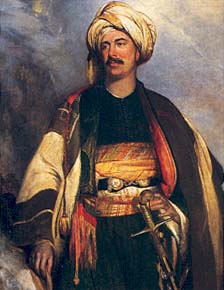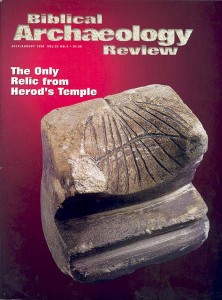Backward Glance: Painting the Past: The Lithographs of David Roberts

David Roberts was no archaeologist. But, thanks to his scores of lithographs of the Holy Land, he may have done more to popularize ancient sites in the Near East than anyone else in the 19th century.
Roberts was an artist who lived before archaeology became a scholarly endeavor. He was born on October 24, 1796, in Stockbridge, Scotland, near Edinburgh. His father was a poor cobbler who encouraged his son’s talent early on: When David saw circus posters around Stockbridge, he took red chalk and drew lines of animals and circus figures all along the walls of the Roberts kitchen. After that, his only real training was as an apprentice to Gavin Beugo, a local decorator and house painter. At age 19, Roberts became an assistant set designer in a small theater in Edinburgh. By 1821, Roberts had worked his way up to the Drury Lane Theatre in London. All the while, Roberts had been sketching every castle, ruin, and scenic vista he saw. His first oil painting was shown at the British Institution in 1824, and his “View of the Cathedral of Rouen” was exhibited at the Royal Academy shortly thereafter.
Already a library member? Log in here.
Institution user? Log in with your IP address.

